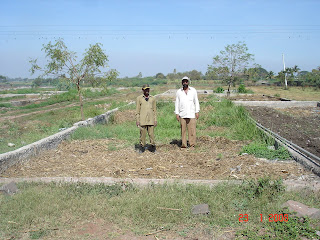In order to address this growing public health and safety concern, the Foundation for Greentech Environmental Systems has developed an alternate approach which involves motivating urban residents to start exercising their ‘Individual Environmental Responsibility’ by adopting the ‘Earth Friendly Green Hobby’ of ‘Home Composting’ and thereby evolve as concerned ‘Earth Citizens’.
In this approach, the biodegradable kitchen waste (whatever a cow can eat!) from a house is put in the Green Earth Machine (GEMÔ) – an improvised bin of 100-150 litre with plenty of holes for composting which has been developed by the Foundation. A GEMÔ is designed for Indian conditions such that it can absorb 1-2 kg/day of vegetable waste from a typical family on a continuous basis, all round the year. The GEMÔ works on completely natural forces - it requires no energy, chemicals, earthworms or bacterial solutions; it works under aerobic conditions and transforms the waste into a good quality compost.
The art and science of ‘Home Composting’ requires maintaining a balance between vegetable kitchen waste, dry leaves (or waste paper, cartons boxes, etc.), moisture and mixing the contents once a fortnight with a rod or a garden rake. From time to time one can sprinkle garden soil, compost, ash or neem khali (de-oiled cake of neem seeds). First compost will come out in about 3 months and then every month one can take out small quantities. Users can integrate this practice with or cultivate the hobby of gardening and derive joy from doing good for the environment.
For the motivated individuals, this practice represents sacrificial offering to the Mother Earth which one can perform by chanting the mantra “Peace be in the universe, peace be on the Earth, peace be in the water, peace be in the herbs and vegetation and peace be everywhere…” which is normally done on completion of a Hawan. For a municipality, this represents an ultimate form of community participation and decentralised solid waste management which offers reduction in cost of collection, transport, treatment and disposal.
To promote this practice and help clean up our cities, the Foundation for Greentech Environmental Systems has launched a War on Waste, set up a Compost Help Line 011 2697 4941 in Delhi and a created a website http://www.green-ensys.org/. Over last 2 years it has enabled about 500 families in Delhi area to adopt this practice which enables returning kitchen waste in a humble manner back to the Earth. In this regard, the Foundation aims to create India Home Compost Network with committed NGOs and municipalities such that more cities and towns can adopt this approach and improve sanitation levels and safeguard public health respectively.













